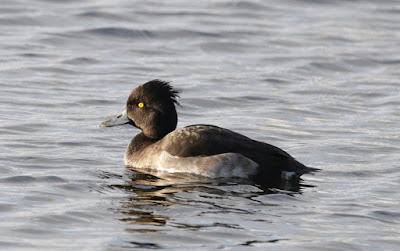This ringing lark gets more difficult to predict. After the rain and wind of Sunday and Monday we felt sure that a fine start to Tuesday might produce an influx of birds to our site at Oakenclough. I met up with Andy at 0630 and then we waited, and waited.
It was a good thing that the feeders were well topped up because that is where we realised the majority of our 20 birds, mostly finches: 14 Goldfinch, 3 Chaffinch, 1 Blackcap, 1 Willow Warbler and 1 Goldcrest.
Of the 14 Goldfinch, 11 were birds of the year in varying stages of post-juvenile moult. An adult female had a clear and well-defined brood patch suggestive of current or very recent breeding this late in August. Such determined productivity and willingness to adopt the suburban garden defines the outstanding success of this now abundant species.
Goldfinch
In the field someone might easily label the below Blackcap as an adult male because of the black cap. Closer scrutiny showed a juvenile/first year tail but also, the tell-tale remnants of a juvenile brown cap. By late August juvenile male Blackcaps show hardly if any brown in their black caps.
Blackcap
Blackcap
Ageing autumn Willow Warblers in the field is very hard, some might say impossible with any degree of certainty given the often brief views of a tiny warbler flitting through the greenery.
The process is much easier in the hand when we employ an understanding of the moult strategy of Willow Warblers to separate the two age classes.
Adult Willow Warblers go through a complete autumn moult while juveniles undertake a partial moult, so that by late summer/early August individual birds of different ages can initially appear identical.
The tails of adults are typically broad, rounded with little or no abrasion; juvenile tails are usually narrower, more pointed and usually look more worn that the equivalent adult tail. In general but not absolutely, adults have whiter bellies than first year birds.
Willow Warbler
There seemed to be little visible migration this morning with just tiny groups of Goldfinch and Chaffinch making their way overhead. We saw 10-20 Swallows heading south and a probable local Sparrowhawk.
We followed up a sighting of a few days ago – five or six Little Ringed Plovers on the margins of the nearby reservoir where the water level remains at summery lows. Yes indeed, 5 Little Ringed Plover. Thanks Peter.
Little Ringed Plover
Looks like a day off tomorrow. But back on Thursday with Another Bird Blog.















































.jpeg)







.jpg)












